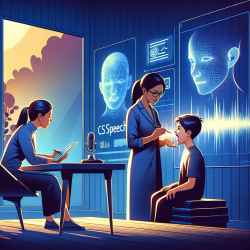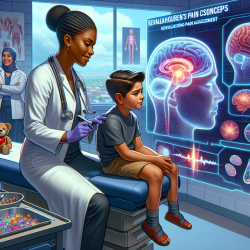Introduction
In the realm of speech-language pathology, the intersection of autism spectrum disorder (ASD) and hearing impairments presents unique challenges. The research article titled Use of the LENA Autism Screen with Children who are Deaf or Hard of Hearing offers groundbreaking insights into addressing these challenges using the Language ENvironment Analysis (LENA) system. This blog aims to translate these findings into actionable strategies for practitioners, enhancing their skills and encouraging further exploration in this critical area.
The Growing Need for Effective Screening Tools
Children who are deaf or hard of hearing (D/HH) are at a higher risk of being diagnosed with ASD, yet traditional diagnostic tools often fall short in this population. The prevalence of ASD in children with hearing loss is reported to be significantly higher than in those with normal hearing, with estimates ranging from 4% to 9% compared to 1 in 59 children in the general population. This underscores the urgent need for reliable screening tools that can differentiate ASD from hearing impairments.
The Role of LENA in Autism Screening
The LENA system, known for its automated vocal analysis, emerges as a promising tool in this context. By capturing daylong audio recordings, LENA provides an objective, non-invasive method to analyze speech and communicative features. The study highlights the potential of the LENA Language Autism Screen (LLAS) in distinguishing between ASD, D/HH, and typically developing children.
Key Findings and Implications for Practitioners
The research indicates that LENA's automated methods show good sensitivity and specificity in identifying children with ASD among those with hearing impairments. For practitioners, this means an additional tool in their arsenal that can enhance early diagnosis and intervention, crucial for improving developmental outcomes.
- Objective Screening: LENA offers an objective approach, reducing the subjectivity inherent in traditional behavioral assessments.
- Early Intervention: Early identification of ASD in D/HH children allows for timely intervention, potentially mitigating the severity of symptoms.
- Telepractice Potential: The non-invasive nature of LENA makes it suitable for remote administration, aligning with the growing trend of teletherapy services.
Encouraging Further Research
While the findings are promising, the study also calls for further research to fully understand the strengths and limitations of LENA in diverse settings. Practitioners are encouraged to participate in or initiate studies that explore LENA's application across different languages and cultural contexts, as well as its integration with other diagnostic tools.
Conclusion
As speech-language pathologists, embracing innovative tools like the LENA Autism Screen can significantly enhance our ability to serve children with complex needs. By integrating data-driven approaches, we can pave the way for better outcomes and a deeper understanding of communication disorders in children who are deaf or hard of hearing.
To read the original research paper, please follow this link: Use of the LENA Autism Screen with Children who are Deaf or Hard of Hearing.










